The Vermillion Coast, la Côte Vermeille, owes its name to the light red rock visible to sailors and fishermen in the western Mediterranean since before antiquity. This rocky, indented shore extends south from Perpignan to the Spanish border. Phoenicians and Romans traded for its wine and anchovies – on the seabed are countless amphorae used to transport wine across the middle sea. Hannibal rode this way on his elephants, along the Via Narbonensis and east on the Via Domitia. The queens of Aragon, the king of Majorca, kept summer palaces here.
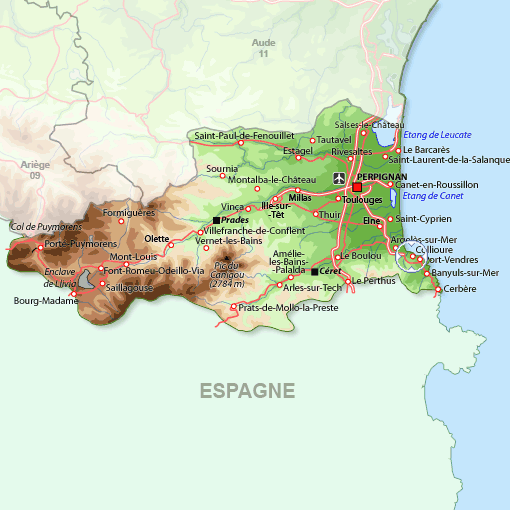
Pyrennées Orientales
Charles Rennie Mackintosh (1868-1927), Glaswegian architect and designer, spent the last years of his life in this southern region known as the Pyrennées Orientales – administratively French but culturally Catalan. He had behind him an innovative career as an architect and interior designer. His work had influenced the Viennese Secessionists and the Art Deco movement. Sensing that his moment had passed, he moved south.
Mackintosh thought of himself as a painter. He came with his wife Margaret in 1923, and they settled initially in Amélie-les-Bains. This was a fashionable resort at the time for those seeking fresh air and hydrotherapy.
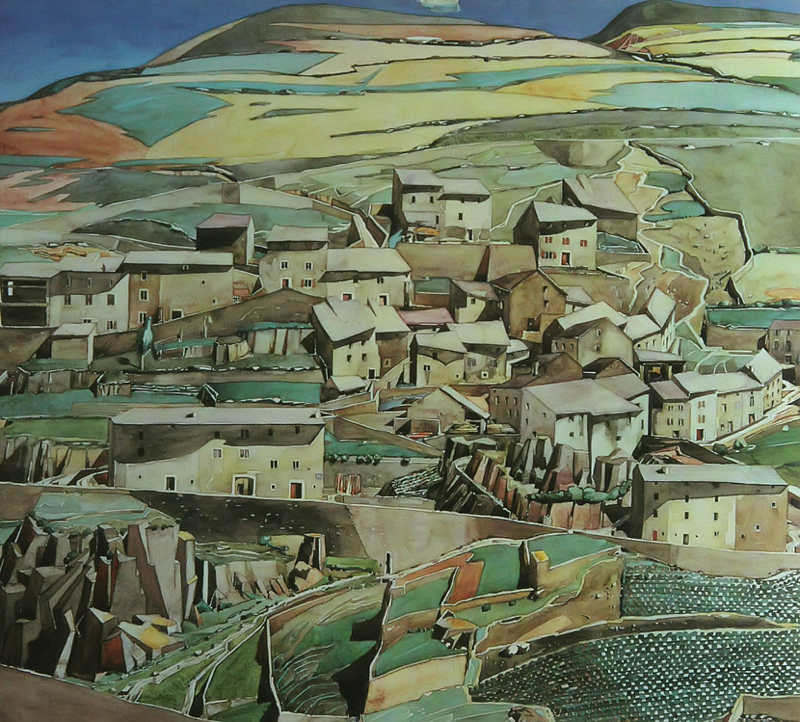
The Mackintoshes visited the fishing village of Collioure on the coast, already past its heyday as an artists’ colony, made famous by Matisse, Derain and the Fauvistes in the 1910s.
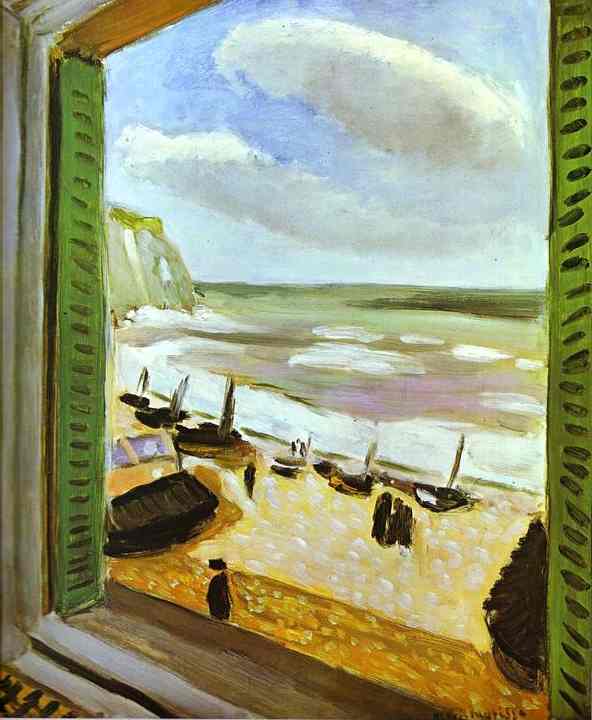
Open window at Collioure by Henri Matisse, 1905
When the couple returned to Roussillon the following year they settled in Ille-sur-Têt, inland from Perpignan. Eventually they moved to Port Vendres, next inlet along from Collioure. Port Vendres (named after the Goddess Venus) is the only deep-water harbour on the eastern Mediterranean and used to be the embarkation point for ferries to French North Africa. The Mackintoshes lived for two years in the Hotel du Commerce on the Quai Forgas, overlooking the lively nautical scene.
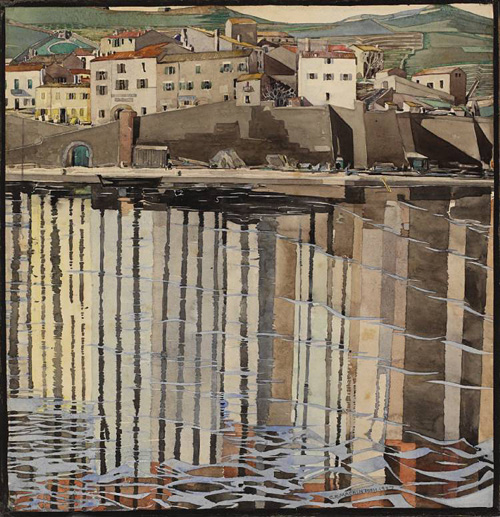
La rue du soleil, Port Vendres by Charles Rennie Mackintosh, 1926
Mackintosh’s watercolours focus intensely on landscape and the human marks left on it – houses, piers, roads and ruined forts. In this he reminds me of the Provincetown lighthouses of that other design-trained painter – Edward Hopper. Both are deliberate, happy to leave out the human figure. There is the same attention to sun on stone, on roofs. Mackintosh captures the austere beauty of a treeless shore on which nothing much grows except vines and olives.
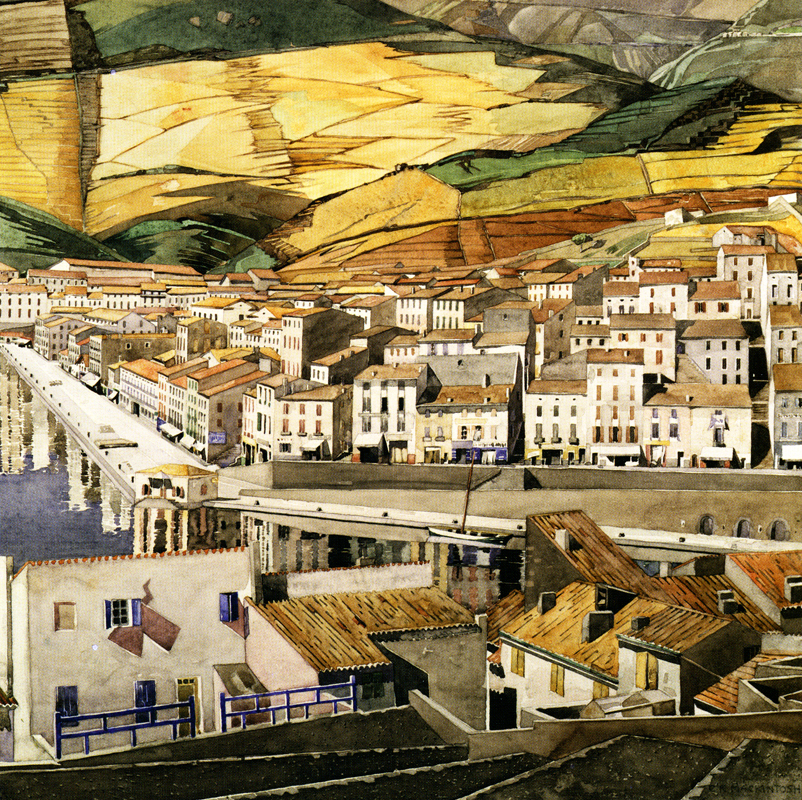
La Ville (Port Vendres), Charles Rennie Mackintosh, 1926
His strong sense of design comes through in the lines of composition creating a grid – like his furniture and buildings. The contemporary artist Mackintosh most admired was Gustav Klimt. They both preferred the proportions of the square. Klimt’s stylised Austrian lakeshores, especially those executed on the Attersee, are as crammed with light and reflection as Mackintosh’s Roussillon villages and ports.

Houses at Unterach on the Attersee, Gustav Klimt
Mackintosh died in London in 1928. His widow Margaret is said to have scattered his ashes into the sea near Port Vendres. During his brief painting career he never really sold his watercolours. There aren’t many of them. But now they are housed in the world’s major collections. Hindsight has also given his pioneering architecture and designs their due.
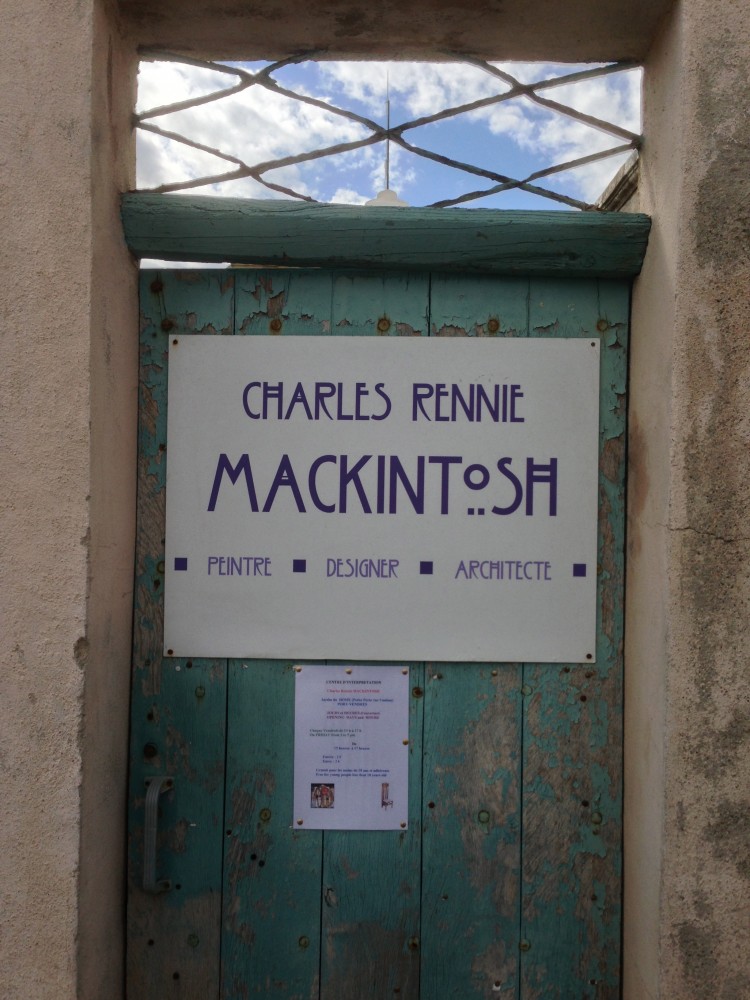
Charles Rennie Mackintosh exhibition at the Dôme, Port Vendres
A little exhibition about Mackintosh and his work opens its doors for a couple of hours during the summer season in the Dôme, originally part of the military barracks in Port Vendres built to honour Louis XVI. A project is underway to develop a Mackintosh Trail in the towns and villages of the Alpes Maritimes where he painted his late luminous work.
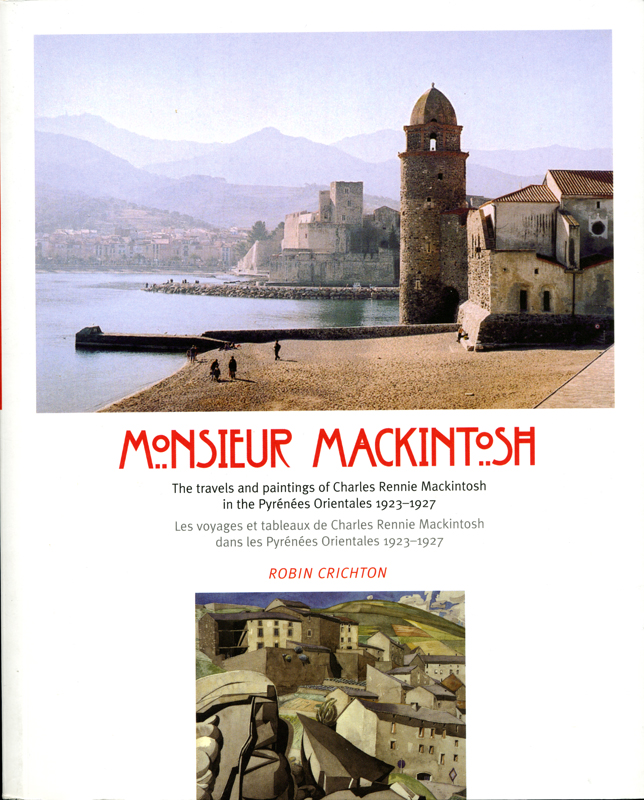
Monsieur Mackintosh by Robert Crichton. Luath Press, Edinburgh, 2006. Bilingual edition.
Robert Crichton has written an excellent detailed account of the painter’s stay. His book redresses an absence, part detective work, part local history. What is especially pleasing about this bilingual guide is the way it hunts down the particular traces of Mackintosh’s stay – small hotels, farmyards, views that inspired specific watercolours. The historical and cultural detail of port life opens our eyes to the past as well as the present. Monsieur Mackintosh evokes a small corner of the world writ large in colour.
The border between France and Spain was a formidable barrier following the Spanish Civil War and during the Second World War. These days it is unmanned, the customs huts and military checkpoints that once evoked fear are derelict and forlorn, rotting in the salt wind. Spanish poet Antonio Machado just made it across, escaping from Franco’s victory in the Spanish Civil War. The little cemetery of Collioure is where he is buried, a stone’s throw from the sea.
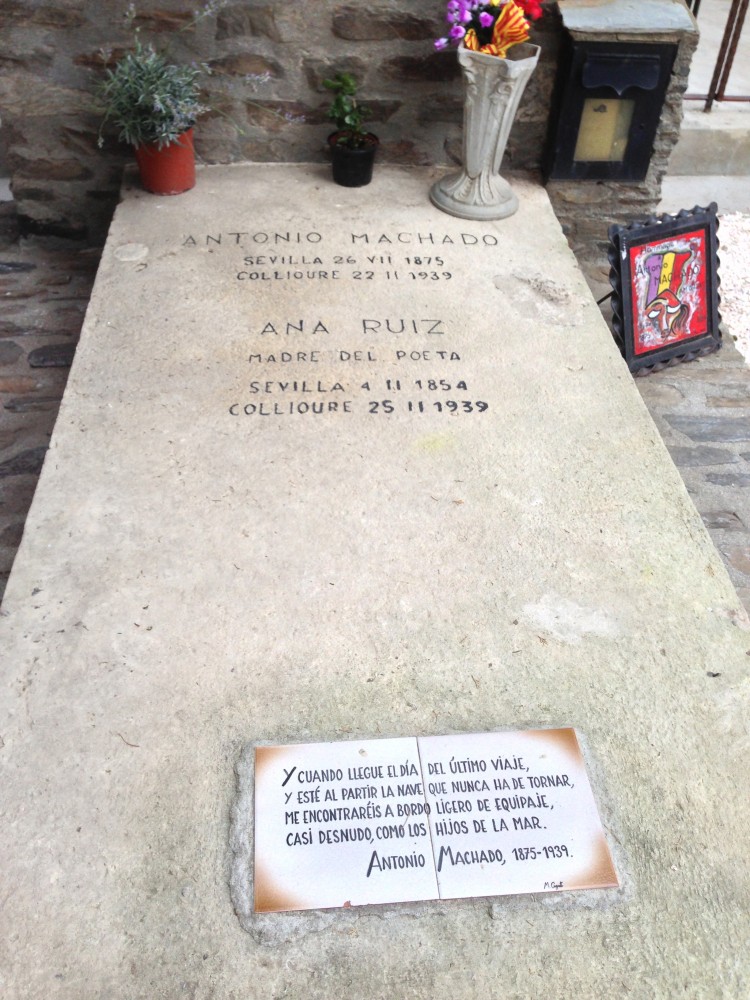
The grave of Spanish poet Antonio Machado and his mother
Across the border in Portbou lies one of the twentieth century’s greatest philosophers. It’s a sleepy Spanish harbour squeezed between two bare hills, dominated by a bleak church and the railway shunting yards. Walter Benjamin, German-Jewish, was fleeing Nazi-occupied France. At 48 years-old and with heart disease, he managed to cross into Portbou but was refused entry by the Spanish authorities. The following morning he was to be handed over to the French, which would mean the Gestapo. He committed suicide in room number 3 of the Hostal França by overdosing on morphine.
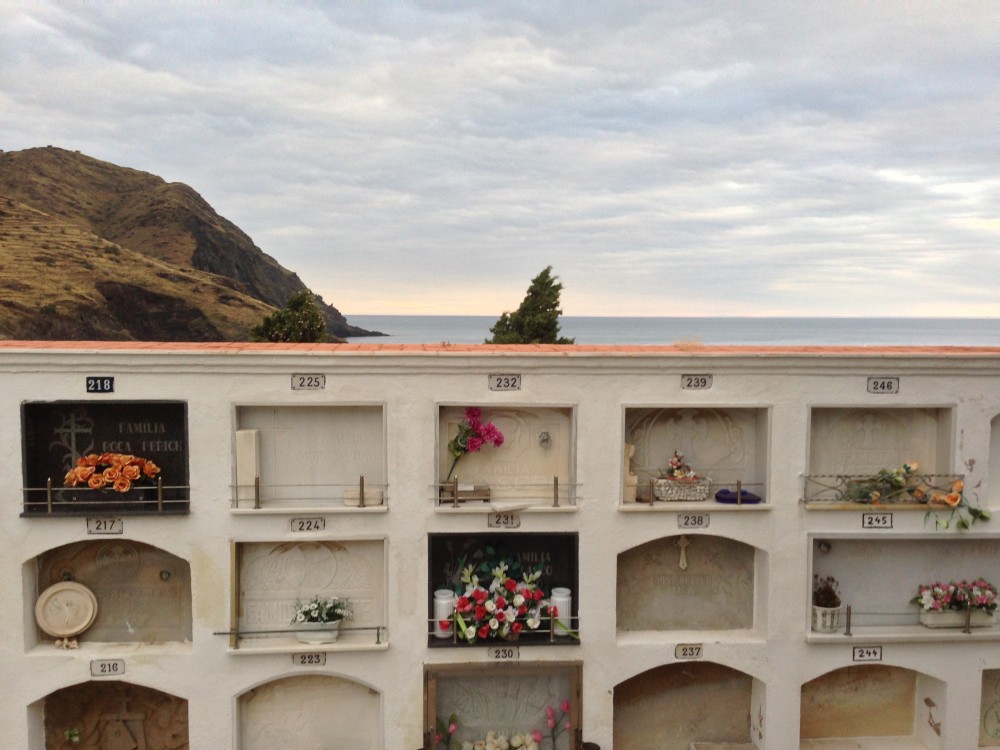
The cemetery at Port Bou
The town honours him in our twenty-first-century way, with informative plaques and a walking tour. His grave is in the cemetery perched on the rock above the greeny-blue bay.
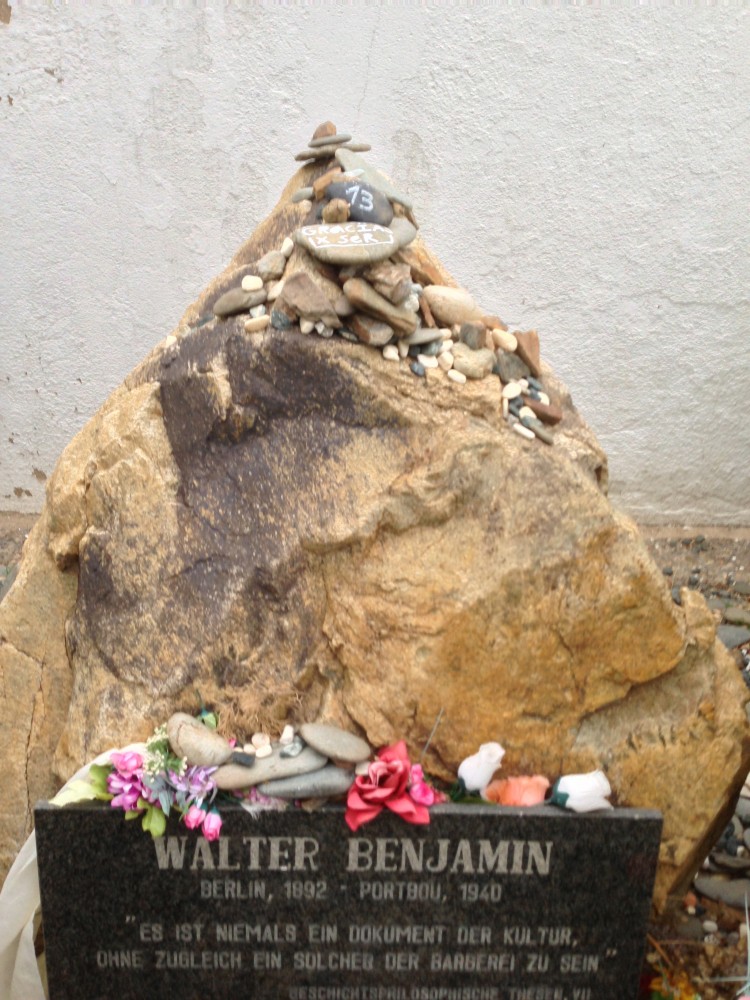
The grave of Walter Benjamin (1892-1940), Portbou
Spanish trains ran on a narrower gauge than their French equivalents and so merchandise – mostly oranges – had to be offloaded at the border town of Cerbère. Thousands of transpordeurs or transbordeuses were thus occupied for many years, bringing prosperity to this tiny fishing village. A statue commemorates their labour under the viaduct arches.
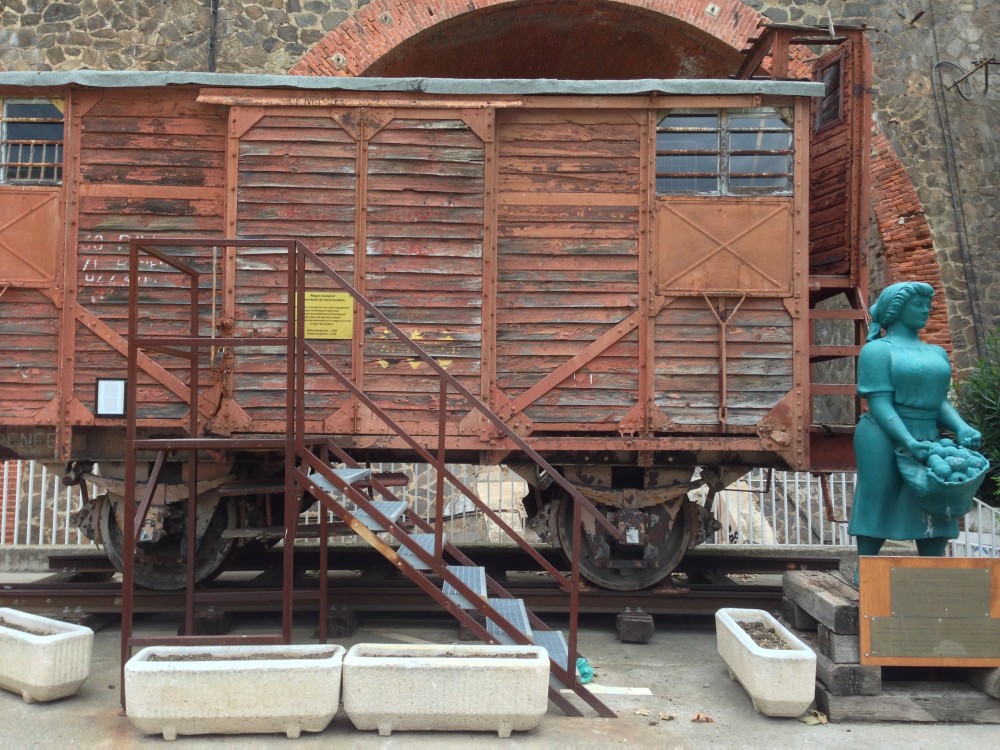
Monument to the Unknown Transbordeuse, Cerbère
Because passengers needed to disembark and wait for onward connections, Cerbère developed a lively, transitory atmosphere during the Belle Époque. Stars of stage and silent screen, royalty, denizens of casinos and dancing girls all pitched up at the Belvedere du Rayon Vert. This striking hotel between the railway lines and the sea is the first reinforced concrete structure in Europe. It has the shape of a beached liner. Its small-paned windows with matching ironwork have the same grid-pattern pioneered by Charles Rennie Mackintosh, and ‘borrowed’ by Viennese designers Kolomann Moser and Hofmann.
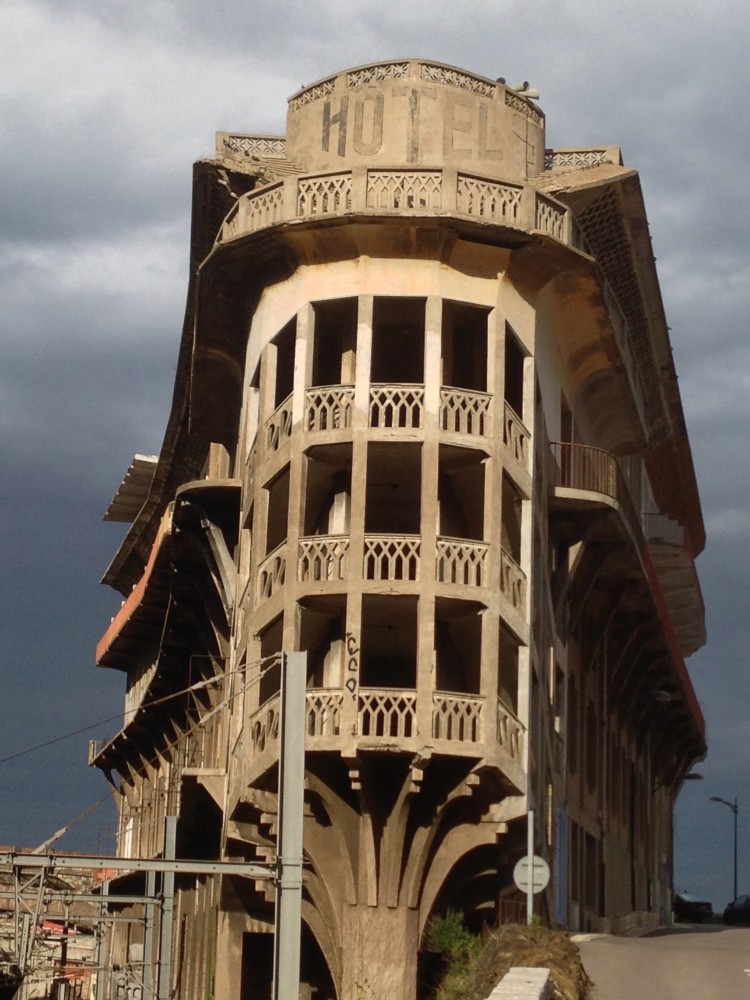
The Hotel Belvedere du Rayon Vert, Cerbère
The Belvedere has a cinema perched on its roof, beloved of the town’s youth down through the decades, with dark recesses and a view of the sea. The hotel is built flush with the train tracks. Guests whiled away a day or two in this pleasure palace until their train de luxe was called over the tannoys.

Facade of the school, Cerbère
Here and there in the fishing villages of the Vermillion Coast you notice fine examples of Seaside Art Deco, for want of a better term. Some are tarted up Follies girls, others crumbling dowagers. The Belvedere is in process of being renovated.
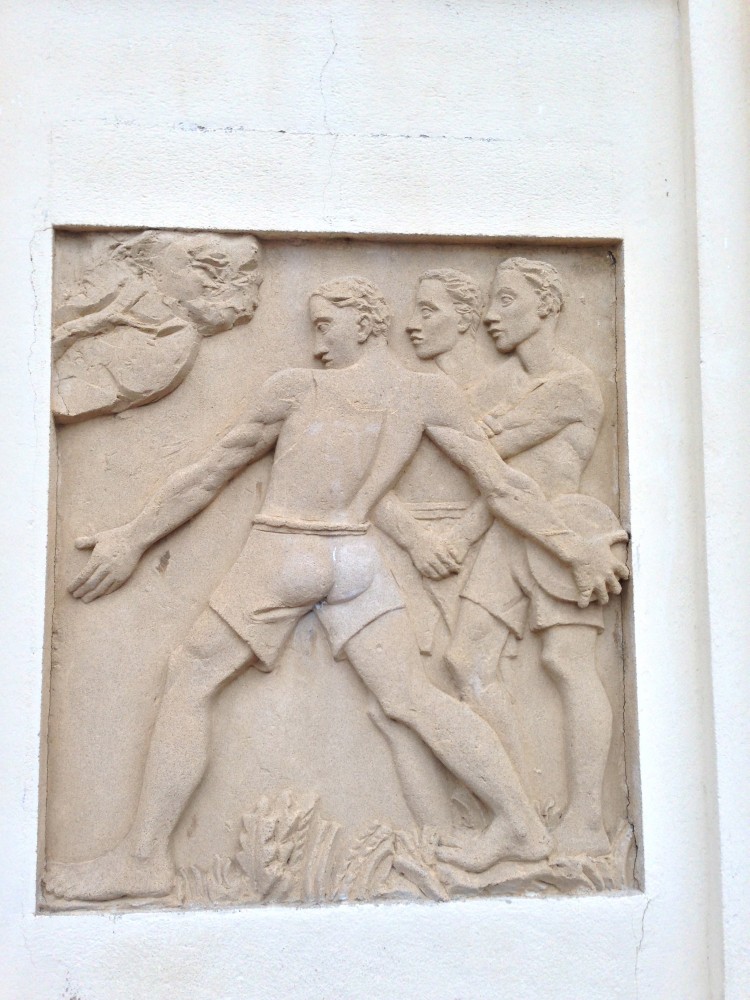
Bas-relief at the entrance to the school, Cerbère
It reminds me of a line by Tom Waits: “There’s nothing wrong with her a hundred dollars wouldn’t fix.” Curved nautical balconies, the line of windows and the lettering on a school facade all testify to the passage of a style along this shore. Like artists, refugees and ships in the night a hundred years ago, they face the sea.

Entrance to Hotel du Belvedere du Rayon Vert

